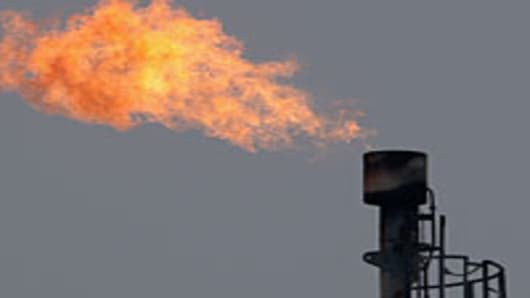According to Energy Information Administration data, the U.S. was producing a record 73.5 billion cubic feet a day in October in the lower 48 states. (Read More: Track Commodity Price Here)
"One of the factors that helped drive gas prices up toward $4 was the idea that this winter would be cooler than last winter. But now that we've gone through December and the first week of January, we're seeing warm weather. That's why the market pared almost a dollar off its Fall rally," said Tradition Energy analyst Gene McGillian. "In the past year, we've seen a considerable cutback in drilling activity, but the latest production reports from the EIA point to record production levels. We haven't seen our production levels impacted."
McGillian said expectations are that Thursday's EIA inventory report, released at 10:30 a.m. ET, will show a storage withdrawal of between 180 to 200 billion cubic feet. "It would be the largest of the season and repair some of the surplus we've seen," he said.
"We're looking for a high end of 195." That could temporary reverse the decline in prices, he added.
Kilduff said the weather forecasts had been for cooler weather, but as the actual dates approached, the forecasts changed.
"We're going to experience weather here in the next several days close to 60 degrees. The weather forecast for the second half of January was for below normal, but that's moderating. As you get closer to the date, the jet stream just doesn't move, and you get this more moderate pattern," he said, from his office in New York. The National Climatic Data Center reported this month that 2012 was the hottest year on record, warmer by a full degree.
Temperatures Wednesday were in the upper 40 degrees Farenheit in the mid-Atlantic states and above freezing in much of New England. The Midwest saw day time temperatures in the 40s and up to the mid-50s.






